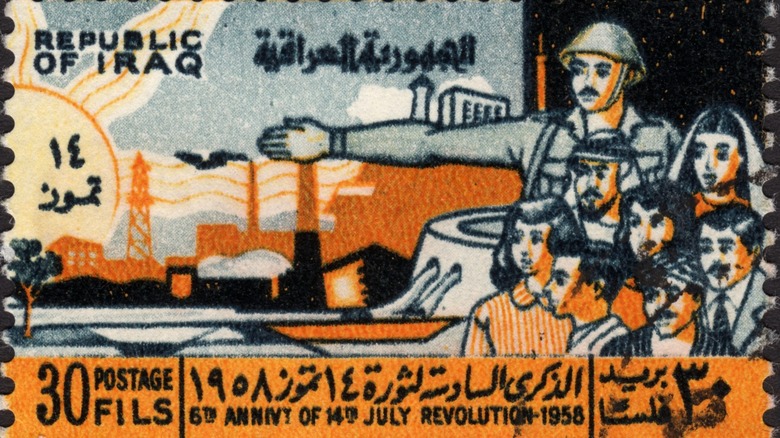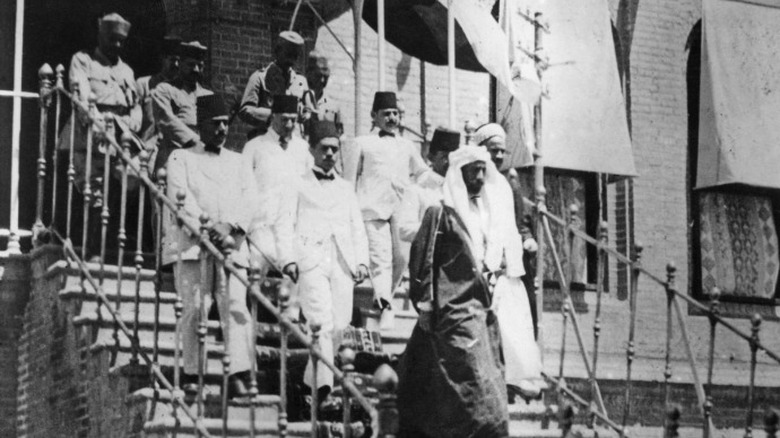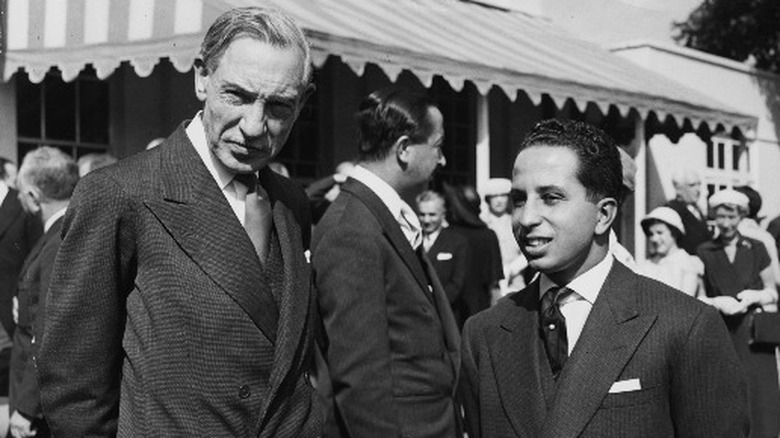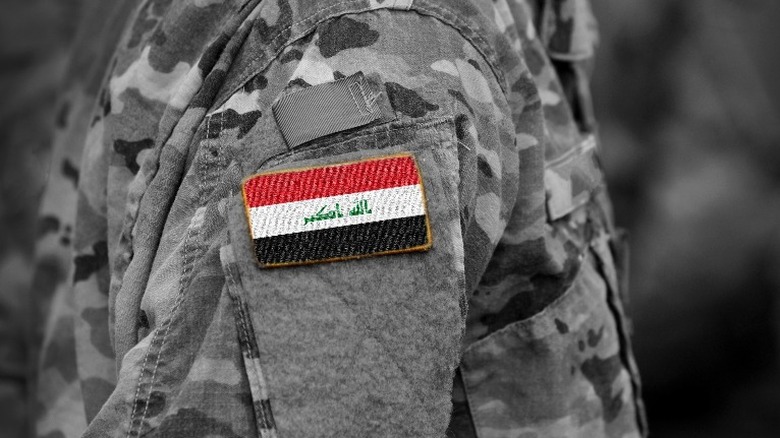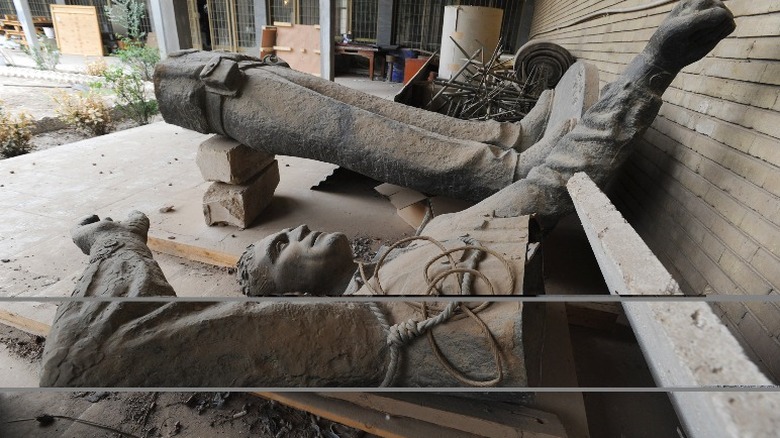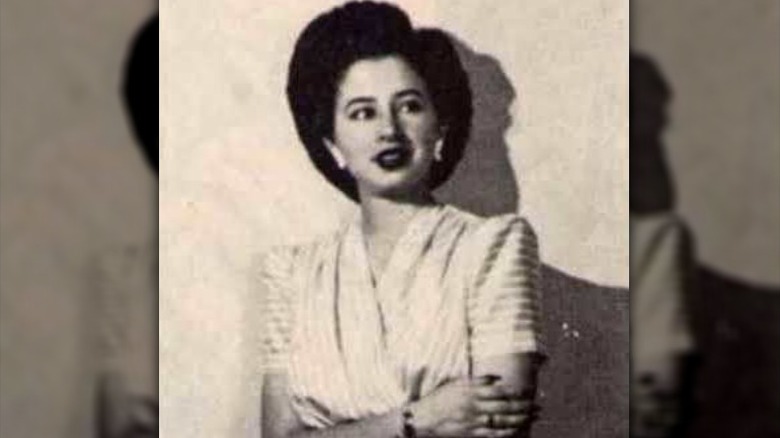The Royal Family Massacre During The 1958 Iraqi Coup D'etat, Explained
It's no secret that Iraq's recent political history has been chaotic and violent. Turns out, that's nothing new.
Some Iraqis blame the country's more recent strife on the fall of their royal family more than 60 years ago. What followed was an unstable republic, then Saddam Hussein's dictatorship. Compared to that — and issues from the past 20 years — the relatively prosperous era of the royal family seems like a "golden age," according to Arab News.
However, they note that not everything was perfect then, either. A sharp divide between rich and poor, as well as discontent over Western influence in the country, were already causing some strife. That unrest led to a rebellion and a coup d'etat in 1958. Arab News writes that the violence of the coup was a preview of what was to come; the coup's leader was assassinated only five years later. It may have seemed like karma, because in 1958, his troops had wiped out the Iraqi royal family.
The Iraqi royal family
The royals had only been in power in Iraq for 37 years before the coup. After the fall of the Ottoman Empire during World War I, The National explains, it took a few years for the area now known as Iraq to stabilize. The British had a mandate, or right to control administration, in Iraq and wanted a hand in the country's future. In 1921, British and other European leaders chose a king for Iraq: Faisal, son of Hussein ibn Ali, Sharif of Mecca. He was a member of the Hashemite dynasty from Saudi Arabia, and the British hoped to continue to control the region through him.
Faisal I ruled for 12 years, overseeing the end of the British mandate and the establishment of the independent kingdom of Iraq. The throne passed to his son Ghazi, but he ruled for only six years before dying in a car accident. The new king, Ghazi's son Faisal II, was only three years old, so for the next 15 years, his uncle, Crown Prince Abdallah, ruled as regent. Faisal went to the Harrow School in England and officially ascended the throne in 1953 (via Arab News).
The background of the coup
Though Iraq was flourishing economically and growing its industries under Faisal II (pictured above, right), many ordinary citizens disliked how closely tied the monarchy still was to Western powers. Resentment, especially of ties to Britain, grew after the Suez Crisis in 1956 (via Arab News).
The differences between ethnic and religious groups in Iraq was also a problem, says The National. Shiite Muslims in particular did not feel well-represented by a Sunni Muslim king.
According to Britannica, the younger generation in Iraq at the time were especially disaffected and were frustrated that the government was still in the hands of older people. A group formed in the Iraqi military called Free Officers: it was small and secretive and began to make plans for a revolution. Their leader was a high-ranking officer, 'Abd al-Karim Qasim. He saw an opportunity when his brigade was ordered to go to Jordan in response to Jordanian tensions with Israel. He decided when his troops passed through Baghdad, they would take the city.
The day of the coup
According to a 1958 Time Magazine article, the coup took only an hour to accomplish, from 5 a.m. to 6 a.m. on July 14. The rebel group entered the city and took over several important places: the railroad station, the main intersections, the post and telegraph offices, and the radio station. Accounts of what happened next vary, but it's certain that some of the rebel soldiers went to the Rihab Palace, the king's residence.
In his book "The Iraqi Revolution of 1958: A Revolutionary Quest for Unity and Security," Juan Romero cites various sources and comes to the conclusion that the royal family exited the back of the palace after soldiers opened fire on it. More rebel soldiers stopped them and surrounded them in the palace gardens, and the king's guards tried to protect them, which led to the soldiers firing upon the royal family. Faisal II was killed along with his uncle, Crown Prince Abdallah; the Crown Prince's mother, Nafisa; and the Crown Prince's sister, Abadiyya. Romero suggests that the rebels had planned to kill Abdallah and Prime Minister Nuri al-Said, who was captured and killed the next day, but not the king himself.
The aftermath of the coup
Qasim (statue pictured) and his followers established martial law in Iraq immediately following the coup. Qasim himself was head of the cabinet he formed as well as commander of national forces and defense minister. The rebels established a Council of Sovereignty of three men who would be the heads of state. Despite this, Qasim held most of the power, according to Britannica.
Not all of the new government ministers were military men. Several were civilians. Many had far-right, nationalist beliefs; some had even been Nazi sympathizers. Though many had been educated in the West, they had strong, anti-Western sentiments (via Time Magazine).
The new government declared Iraq a republic and announced that Islam would be the state religion. Many of the rebels had been interested in the pan-Arab ideals espoused by Egyptian president Gamal Abdel Nasser, but Qasim wanted to focus on Iraq's independence. Eventually, divisions such as these weakened the new government and politically isolated Qasim. His government fell in 1963 (via Britannica).
A possible lone survivor
One of the enduring mysteries of the Iraqi coup is the fate of Princess Hiyam (above), wife of Crown Prince Abdallah. Though some later sources record that she also died in the coup, she is not listed among the dead in a Time Magazine article from July 1958. In Romero's book, multiple sources report that she was only wounded, not killed.
One of the more detailed accounts says that she was wounded in the thigh and carried by a member of the Royal Guard to a room where he hid her. Romero notes that this would have been hard to do without the rebel soldiers seeing, and that the gunfire would likely have been very heavy and difficult to survive, but it's still a possibility. The princess's fate after the massacre is unknown. Other members of the royal family escaped to Saudi Arabia with the help of the country's king and the Saudi ambassador to Iraq, according to Arab News. Perhaps Princess Hiyam did the same.
